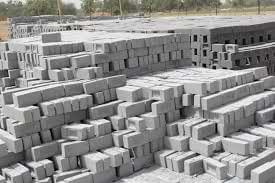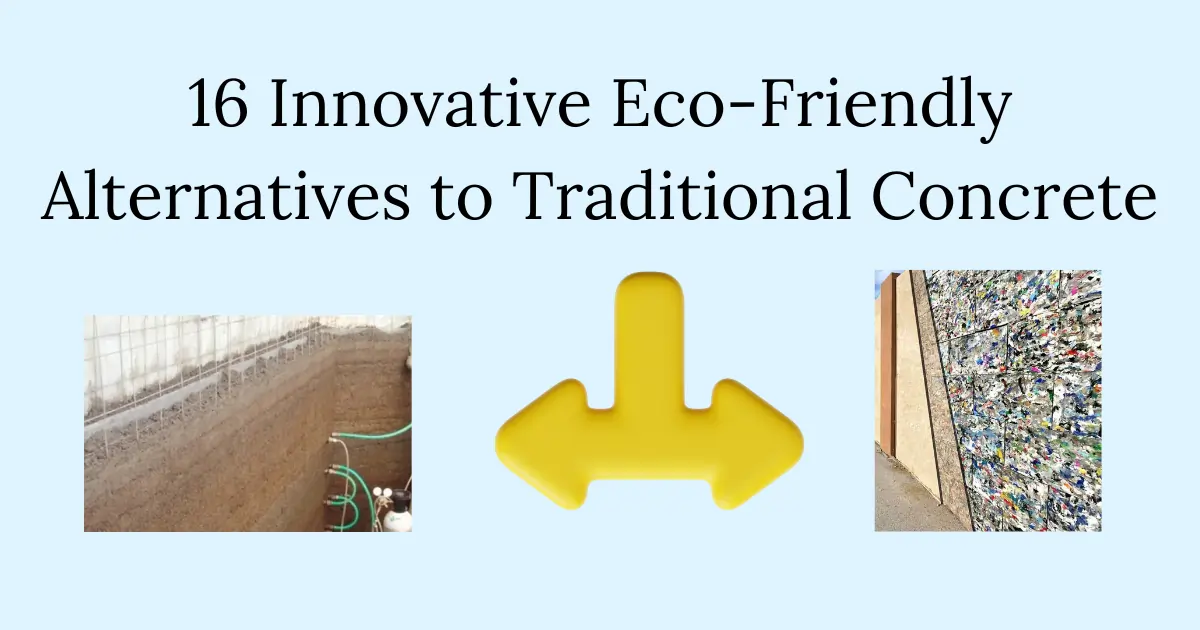In a world grappling with climate change, the construction industry is under pressure to find sustainable solutions. Traditional concrete, while ubiquitous, carries a hefty environmental toll. But fear not, contractors and eco-conscious builders! A new wave of innovative, eco-friendly alternatives is reshaping the landscape of sustainable construction.
The Environmental Impact of Traditional Concrete
Concrete is the second most-used substance on Earth after water, but its production comes at a steep environmental cost. The cement industry alone accounts for about 8% of global CO2 emissions. Traditional concrete manufacturing is also resource-intensive, consuming vast amounts of water and raw materials.
Green Concrete: The Future of Sustainable Construction
Enter green concrete, a game-changing concept revolutionizing the construction industry. By incorporating waste materials and reducing cement content, green concrete significantly lowers energy consumption and CO2 emissions without compromising strength or durability.
1. Ashcrete
Ashcrete is a prime example of turning waste into wonder. Made by mixing cement with
recycled fly ash – a byproduct of coal combustion – this innovative material reduces CO2 emissions while improving concrete’s strength and durability. By repurposing industrial waste, ashcrete offers a double win for sustainability.

2. Hempcrete
For those seeking a truly natural alternative, hempcrete is a breath of fresh air. Composed of hemp fibers mixed with lime and water, this bio-based material boasts impressive environmental credentials. Hempcrete can reduce carbon emissions by up to 80% compared to traditional concrete, all while providing excellent natural insulation.
3. Micro Silica Fumes Concrete
Micro silica fumes, an ultra-fine powder derived from ferrosilicon alloy production, are transforming concrete mixtures. By reducing cement usage and increasing durability, this alternative not only cuts down on environmental impact but also enhances the longevity of structures.
4. Recycled Plastic Concrete
In an era drowning in plastic waste, recycled plastic concrete offers a lifeline. By replacing up to 20% of traditional aggregates with recycled plastic, this innovative solution tackles two problems at once: reducing plastic waste and lowering greenhouse gas emissions from concrete production.
credit@courtesy of www.apartmenttherapy.com
5. Ferrock Steel Dust Concrete
Ferrock takes recycling to the next level. Made from recycled steel dust, this material is not just eco-friendly – it’s carbon-negative. As it cures, ferrock absorbs and traps CO2, making it a powerful ally in the fight against climate change.
Credit @courtesy of WWW.BUILDABROAD.ORG/2016/09/27/FERROCK/)
Innovative Bio-Based Alternatives
6. Mycelium – Mushroom-Based Materials
Nature’s building block, mycelium – the root structure of fungi – is emerging as a sustainable construction material. Durable, fire-resistant, and fully biodegradable, mycelium-based materials offer a truly circular solution for eco-conscious builders.
Credit @ courtesy of https://www.certifiedenergy.com.au/
7. Papercrete or Fibrous Concrete
Papercrete turns trash into treasure by incorporating recycled paper into concrete mixtures. This innovative approach not only reduces cement usage but also provides a second life for paper waste, significantly lowering the carbon footprint of construction projects.
Earth-Based Sustainable Options
8. Rammed Earth
Rammed earth construction, an ancient technique experiencing a modern revival offers a low-impact alternative to concrete. Rammed earth walls are made by ramming a mixture of selected aggregates, including gravel, sand, silt, and a small amount of clay, into boxes made of flat panels called formwork. rammed earth structures provide durability with minimal environmental impact.
9. Timbercrete
Timbercrete combines the best of both worlds – the strength of concrete with the sustainability of wood waste. By incorporating sawdust into the mixture, timbercrete reduces cement usage and carbon emissions while creating a unique, aesthetically pleasing material.
Industrial Byproducts as Concrete Alternatives
10. Blast Furnace Slag
The steel industry’s loss is construction’s gain. Blast furnace slag, a byproduct of steel manufacturing, can be used to improve concrete strength and reduce heat emissions during hydration. This circular economy approach turns waste into a valuable resource for sustainable building.
11. Post-Consumer Glass
Glass doesn’t have to end up in landfills. When used as an aggregate in concrete, recycled glass can increase durability while reducing waste. This innovative approach gives new life to discarded glass, creating a stronger, more sustainable concrete alternative.
Innovative Concrete Technologies
12. Grasscrete
Grasscrete offers a unique solution for areas requiring both solid surfaces and green spaces. By laying concrete in patterns that allow for grass and flora growth, grasscrete improves rainwater absorption and drainage, reducing runoff and enhancing biodiversity in urban environments.
13. 3D-Printed Concrete
The future of construction is here, and it’s 3D-printed. This cutting-edge technology offers more design freedom, faster construction times, and enhanced sustainability. By optimizing material use and reducing waste, 3D-printed concrete is paving the way for more efficient, eco-friendly building practices.
14. Composite Cement
Composite cement, utilizing innovative materials and foam beads, creates a strong yet lightweight alternative to traditional concrete. This approach not only reduces the energy required for production but also enhances the thermal insulation properties of the final structure.
Recycling and Reuse in Concrete Production
15. Concrete Debris
The circular economy comes full circle with the reuse of concrete debris. By crushing and recycling old concrete, contractors can reduce the demand for new raw materials, lowering the environmental impact of construction projects while maintaining structural integrity.
16. Post-Consumer Glass
Recycled glass isn’t just for new bottles. When used as an aggregate in concrete, post-consumer glass can increase durability and reduce landfill waste. This innovative approach gives discarded glass a second life while enhancing the properties of concrete.
Conclusion
The future of sustainable construction is bright, with these 16 eco-friendly alternatives to traditional concrete leading the charge. From bio-based materials like hempcrete and mycelium to innovative recycling techniques and cutting-edge technologies, contractors now have a wealth of options to reduce their environmental impact without compromising on quality or strength.
As the construction industry continues to evolve, embracing these sustainable alternatives will be crucial in building a greener, more resilient future. By choosing eco-friendly concrete alternatives, contractors can play a pivotal role in reducing carbon emissions, conserving resources, and creating structures that are not only durable but also kind to our planet.
The path to sustainable construction is paved with innovation, and these alternatives are just the beginning. As research continues and technologies advance, we can look forward to even more groundbreaking solutions that will reshape the way we build our world – one eco-friendly block at a time.

